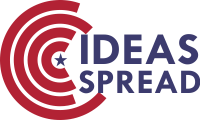Discussion on the Clinical Application of Acupuncture and Cosmetology from 'Where the Truth is Stabbed, the Spirit must be Cured First'
Abstract
Acupuncture and moxibustion is one of the core parts of traditional Chinese medicine, through acupuncture and moxibustion on the skin can harmonise yin and yang, dredge the meridians and channels, beauty and health, and slow down the aging process. The many doctrines and classical needling methods in the ‘Internal Canon’ have laid a solid foundation for the theory and clinical operation of acupuncture and cosmetology. In this paper, we start from the theory of ‘Where the prick is real, the Spirit must be treated first’ in the ‘Ling Shu’, and discuss the clinical application of the theory of ‘treating the Spirit’ in acupuncture and cosmetology, with a view to providing references for clinical treatment and research.
References
[2] Lv, A.-P., & Du, L.-Y. (2013). Exploration of the connotation of ‘unity of form and spirit’ of kidney essence. China Journal of Basic Chinese Medicine, 19(07), 721+724.
[3] Zhang, J. (2010). Exploration of acupuncture for the treatment of God. Hebei Traditional Chinese Medicine, 32(11), 1692-1693.
[4] Anonymous. (2005). Ling Shu Jing [Monograph]. Beijing: People's Health Publishing House.
[5] Cao, Z. W., Liu, J., Huang, H. X., et al. (2023). Exploration of the thought of governing God and keeping qi based on the theory of Huangdi Neijing. Guangming Traditional Chinese Medicine, 38(05), 834-837.
[6] Sun, J., & Chen, L. (2021). The cosmetic view of the Yellow Emperor's Classic of Internal Medicine and its clinical guidance on acupuncture and cosmetology. Journal of Zhejiang University of Traditional Chinese Medicine, 45(02), 185-189.
[7] Wang, S., Yang, C., Tian, H., et al. (2023). From form-spirit unity to mind-body medicine: Theory and practice of acupuncture and moxibustion. Chinese Acupuncture and Moxibustion, 43(04), 390-394.
[8] Zhong, X., Zhao, L., & Guo, W. (2022). A review of the thought of ‘He’ needle treatment of God in the Ling Shu Jing. China TCM Emergencies, 31(09), 1450-1452+1500.
[9] Zhang, Y., & Liu, B. (2023). ‘Acupuncture for God’ and clinical empathy review. Chinese Journal of Traditional Chinese Medicine, 38(03), 931-934.
[10] Zhang, J. (2022). Discussion on the relationship between ‘eye’ and ‘spirit’ in the Neijing [Doctoral dissertation, Shandong University of Traditional Chinese Medicine].
[11] Su, Z. H., Wang, S. J., & Ju, B. Z. (2022). Discussion on the relationship between ‘Yangming pulse failure’ and acupuncture for beauty and anti-aging. Journal of Practical Chinese Medicine, 36(06), 41-43.
[12] Song, W., Wang, K., Guo, W., et al. (2022). Construction and significance of skin and body surface identification system in Chinese medicine. Chinese Journal of Traditional Chinese Medicine, 37(06), 3003-3006.
[13] Wang, J. (2016). Introduction to Meridian Medicine [Monograph]. Beijing: China Traditional Chinese Medicine Press.
[14] Lu, Y. H., & Huang, Y. (2017). An analysis of diagnostic and treatment system and academic thoughts on acupuncture and meridian identification and treatment by Professor Wang Juyi. World Chinese Medicine, 12(3), 610-613.

This work is licensed under a Creative Commons Attribution 4.0 International License.
Copyright for this article is retained by the author(s), with first publication rights granted to the journal.
This is an open-access article distributed under the terms and conditions of the Creative Commons Attribution license (http://creativecommons.org/licenses/by/4.0/).









1.png)














